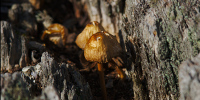





Since its early beginnings darktable has a tone curve module that is able to alter the gray level distribution of an image. Recently we did an enhancement: tone curve is now able to control the full Lab color space with separate curves for the L, a and b channel. People who are used to curve tools in RGB, at first might get puzzled over the results of these three curves; they show marked differences to the typical RGB curve. Especially a and b channels need to be dealt with in the right way; not doing so will give you strong off-colors. To spare you frustration here are some explanations and examples.

different kind of saturation

there are many different ways of tuning saturation, darktable does offer a few alternative ways to alter saturation and the reason for this post is to clarify what they do and how they work. the image on left is the original untouched image used for the different examples below, use it as a reference for comparing the results of the different kind of saturation described below, the resulting effects is exaggerated to make it easier to spot the differences.